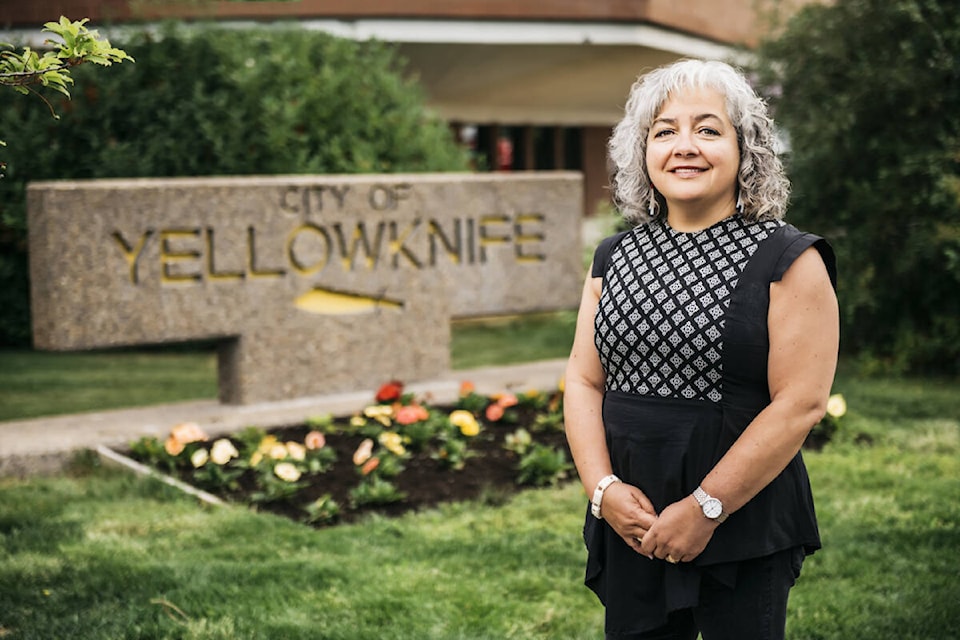The 2022 city council election is well in the books. Some people were happy, some not so happy, but the city itself is quite pleased with how things turned out overall.
Yellowknifer spoke with city manager Sheila Bassi-Kellett recently to get her perspective.
She said there was an internal debrief shortly after the results were confirmed to see what worked and what didn’t, but the overall feeling is one of success.
“I was pleased to see so many eligible voters turn out and take part in the democratic process,” she said. “I returned from holiday (after the election) and you really get a sense of just how privileged we are to be able to vote. A lot of people don’t get to choose who they want to represent them, and that’s what makes living here so great.”
The municipal election turnout was 48 per cent — 3,939 ballots were counted out of more than 8,000 that were sent by mail or cast at the voter assistance locations at the Tree of Peace and the Multiplex. The final number was down from the 56 per cent four years earlier, but Bassi-Kellett said it’s still much better than what’s happened in some other areas of the country.
“B.C.’s municipal election numbers were down in the low-30s range, so for us to have as good a response as we had showed people care,” she said. “Voters seemed to adjust well to the mail-in balloting — we wanted to provide voters with the flexibility and convenience of being able to vote that way — and the process turned out well.”
Ballots not received
The convenience of the mail-in ballot was something Bassi-Kellett stressed; she said it provided the city with cost savings and less struggle to find people to work on election day.
“Convenience and ease was our number one priority,” she said. “If you were working during the day, all you had to do was visit one of the locations and drop off your ballot. It’s also getting harder to find workers, so the stress of finding election day staff was lessened.”
There were stories, however, of people not receiving a ballot in the mail, or some residences receiving more than one ballot. Yellowknifer was told about both sorts of instances happening and more than one employee with NNSL Media had one or the other happen to them.
Bassi-Kellett said it’s up to residents to inform the city about their current living arrangements in order for enumeration to be up to date.
“People may think that their property tax bill can be used as a way to do that, but we’re not allowed to use that for information,” she said. “If you leave the city, or if you’re new to the city and have lived here for at least one year, you need to contact the city in order to be enumerated. Always give us your current information so you’re on the voters’ roll.”
There are clear legal parameters that must be followed when a mail-in voting campaign is conducted and the city did everything it could to keep the process as smooth as possible, according to Bassi-Kellett.
“For example, if you filled out your ballot on Oct. 13 and put in the mail, there was a very good chance it wouldn’t arrive at city hall by the time ballots would have been counted,” she said. “There was the convenience of dropping off your ballots at city hall or either of the voter assistance locations. We were also doing twice-daily pick-ups at Canada Post — we even did one right at the end of the day before the counting of ballots began on the 17th. We don’t mess around with the integrity of voting — we take it very seriously.”
As to how many ballots arrived after Oct. 17? A rather minuscule number, said Bassi-Kellett.
“Two,” she said, as of Oct. 20.
The voter assistance locations were there for the purpose of giving people who may not have been on the voters list a chance to vote, she added.
“If we had new residents, or even new Canadian citizens who may have not been on the list, we wanted to keep the mechanism of the in-person balloting for them,” she said.
